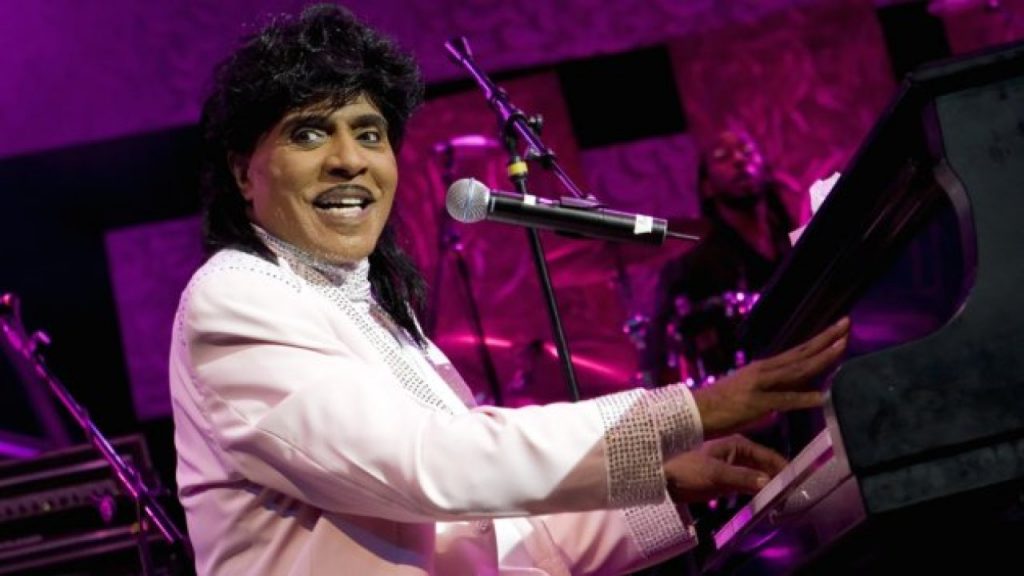
Originally Written May 5th 2020
A founding father of rock & roll whose fervent shrieks, flamboyant garb, and joyful, gender-bending persona embodied the spirit and sound of that new art form, died Saturday. He was 87. The musician’s son, Danny Jones Penniman, confirmed the pioneer’s death to Rolling Stone. The cause of death was bone cancer, according to his lawyer, Bill Sobel.
Starting with “Tutti Frutti” in 1956, Little Richard cut a series of unstoppable hits – “Long Tall Sally” and “Rip It Up” that same year, “Lucille” in 1957, and “Good Golly Miss Molly” in 1958 – driven by his simple, pumping piano, gospel-influenced vocal exclamations and sexually charged (often gibberish) lyrics. “I heard Little Richard and Jerry Lee Lewis, and that was it,” Elton John told Rolling Stone in 1973. “I didn’t ever want to be anything else. I’m more of a Little Richard stylist than a Jerry Lee Lewis, I think. Jerry Lee is a very intricate piano player and very skillful, but Little Richard is more of a pounder.”Although he never hit the Top 10 again after 1958, Little Richard’s influence was massive. The Beatles recorded several of his songs, including “Long Tall Sally,” and Paul McCartney’s singing on those tracks – and the Beatles’ own “I’m Down” – paid tribute to Little Richard’s shredded-throat style. His songs became part of the rock & roll canon, covered over the decades by everyone from the Everly Brothers, the Kinks, and Creedence Clearwater Revival to Elvis Costello and the Scorpions. Guitarist and Radio Host Steven Van Zandt Posted This To Twitter:
Little Richard’s stage persona – his pompadours, androgynous makeup, and glass-bead shirts — also set the standard for rock & roll showmanship; Prince, to cite one obvious example, owed a sizable debt to the musician. “Prince is the Little Richard of his generation,” Richard told Joan Rivers in 1989, before looking at the camera and addressing Prince. “I was wearing purple before you was wearing it!”
Born Richard Wayne Penniman on December 5th, 1932, in Macon, Georgia, he was one of 12 children and grew up around uncles who were preachers. “I was born in the slums. My daddy sold whiskey, bootleg whiskey,” he told Rolling Stone in 1970. Although he sang in a nearby church, his father Bud wasn’t supportive of his son’s music and accused him of being gay, resulting in Penniman leaving home at 13 and moving in with a white family in Macon. But music stayed with him: One of his boyhood friends was Otis Redding, and Penniman heard R&B, blues, and country while working at a concession stand at the Macon City Auditorium.
After performing at the Tick Tock Club in Macon and winning a local talent show, Penniman landed his first record deal, with RCA, in 1951. (He became “Little Richard” when he about 15 years old, when the R&B and blues worlds were filled with acts like Little Esther and Little Milton; he had also grown tired with people mispronouncing his last name as “Penny-man.”) He learned his distinctive piano style from Esquerita, a South Carolina singer and pianist who also wore his hair in a high black pompadour.
and the rest as they say is history
By 1956, he was washing dishes at the Greyhound bus station in Macon (a job he had first taken a few years earlier, after his father was murdered and Little Richard had to support his family). By then, only one track he’d cut, “Little Richard’s Boogie,” hinted at the musical tornado to come. “I put that little thing in it,” he told Rolling Stone in 1970 of the way he tweaked with his gospel roots. “I always did have that thing, but I didn’t know what to do with the thing I had.”
During this low point, he sent a tape with a rough version of a bawdy novelty song called “Tutti Frutti” to Specialty Records in Chicago. He came up with the song’s famed chorus — “a wop bob alu bob a wop bam boom” — while bored washing dishes. (He also co-wrote “Long Tall Sally” while working that same job.)
By coincidence, label owner and producer Art Rupe was in search of a lead singer for some tracks he wanted to cut in New Orleans, and Penniman’s howling delivery fit the bill. In September 1955, the musician cut a lyrically cleaned-up version of “Tutti Frutti,” which became his first hit, peaking at 17 on the pop chart. “’Tutti Frutti really started the races being together,” he told Rolling Stone in 1990. “From the git-go, my music was accepted by whites.”
and now I’ll end with one of my favorite quotes by the Architect of Rock & Roll as he has become so well known:
And I’d like to give my love to everybody, and let them know that the grass may look greener on the other side, but believe me, it’s just as hard to cut.
Little Richard
